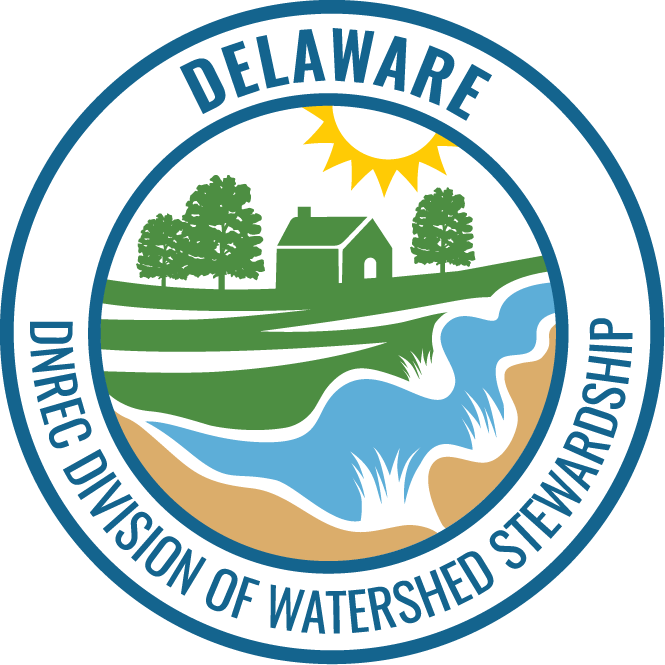
Facebook Twitter Instagram YouTube
Written on: March 14th, 2022 in Education and Outreach, Wetland Animals
By Kayla Clauson, DNREC’s Watershed Assessment and Management Section
If you’ve followed the WMAP blog for some time, there is no lack of evidence how important salt marshes and other wetlands are. Here, I will dive deeper on salt marsh ecology with a focus on the low marsh zone. First, here are some important fast facts on salt marshes.
These characteristics make the marsh a stressful environment for both plants and animals that live there.
Typical salt marshes can be split into two zones, best classified by the types of vegetation growing there. The vegetation zonation is driven by the conditions the plants are exposed to. Being flooded periodically with salty water means the plants in the low marsh zone are best adapted to dealing with that stressor. Plants in the high marsh zone are less frequently flooded but they still have special adaptations to deal with the periodic salty-water interactions. Plants in the high marsh are more diverse than the low marsh because there is less stress.
Let’s take a further look into the low marsh community and meet the three major contenders that work together to help the low marsh thrive.
First up is the dominant low marsh grass – Sporobolus alterniflorus (previously Spartina alterniflora) or Saltmarsh Cordgrass.
Saltmarsh Cordgrass is the best suited grass for life in the low marsh because it can handle all the stress that comes with living on the water’s edge. It has a special adaptation to excrete salt on its leaves that it takes up from the water, leaving it with a little sparkle. Saltmarsh Cordgrass has shallow roots that can thrive in the low oxygen environment of the mud.
Give it up for Saltmarsh Cordgrass!
Next up are Ribbed Mussels (Guekensia demissa).
These mussels can be found in the low marsh at the base of Saltmarsh Cordgrass along the tidal channel. They form large clumps together, using special threads to anchor them in place. They are filter feeders, opening their shells slightly when submerged at high tide to allow water to pass through. At low tide, they close shut to avoid drying out until the next high tide.
Give it up for Ribbed Mussels!
Last up are Fiddler Crabs (Uca sp.)
Fiddler crabs are named as so because the males have a large single claw that moves in a “fiddle-playing motion” when trying to find a female mate. It is easy to spot the difference between males and females because the females have two small claws compared to the males one large and one small claw.
At low tide Fiddler crabs can be seen alongside their burrows in the mud. The burrows are their homes and can be up to two feet deep. During high tide the crabs will plug-up their burrow with mud, so they do not get flooded.
Give it up for Fiddler Crabs!
These three contenders are important for marsh function, each playing an important role in low-marsh ecology.
Ribbed mussels provide structure for the roots of Saltmarsh Cordgrass, as well as fertilizer that aids the grass growth in the stressful environment. The sturdy structure created by mussels decreases erosion. Whereas Fiddler crabs aerate the sediments with their burrows, bringing oxygen deeper into the very-low oxygen mud to be utilized by the Saltmarsh Cordgrass. Also, fiddler crabs consume the dying plant matter, allowing them to recycle nutrients for use. The Saltmarsh Cordgrass provides the mussels with attachment sites and increases food supply by trapping sediments while also providing the Fiddler crabs protection from predation and a buffer from other physical stressors.
But like all things, balance is important.
Too much or too little of something can throw things off. While coastal wetlands like salt marshes are facing challenges due to climate change and sea-level rise, shifts can occur. One example researchers have observed is a decline in predators (such as fish and wading birds) leads to an increase in Fiddler crabs. The abundance of Fiddler crabs means an increase in their burrows, which can weaken the marsh banks and lead to collapse. The three contenders working together in harmony are what helps a Saltmarsh thrive. We therefore must appreciate how dynamic the natural world is and consider the constant changes that occur around us each day.